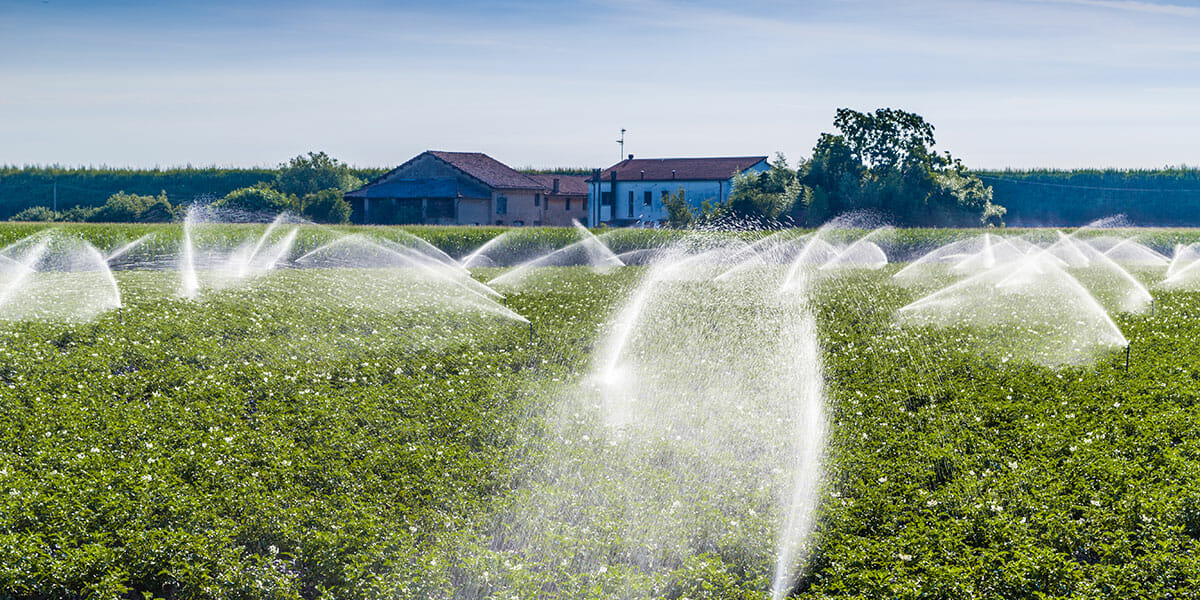The Role of Water Pumps in Irrigation
Water pumps play a crucial role in irrigation by facilitating the movement of water from its source (such as a well, river, or reservoir) to the fields or crops that need watering. Here’s how water pumps are used in irrigation:
- Water Lifting: Elevating water from its source to the fields.
- Water Distribution: Facilitating uniform watering through various irrigation systems.
- Pressure Regulation: Adjusting water pressure for different crop needs.
- Remote Irrigation: Automating watering schedules for improved efficiency.
- Water Lifting: In areas where the water source is located at a lower elevation or underground, water pumps are used to lift the water to the surface or to higher ground where it can be distributed to the fields.
- Water Distribution: Once the water is lifted, pumps help distribute it through irrigation systems such as drip irrigation, sprinkler irrigation, or flood irrigation. These systems ensure efficient and uniform watering of crops.
- Pressure Regulation: Water pumps also help regulate the pressure of water within the irrigation system. Different crops require different levels of water pressure for optimal growth, and pumps can adjust the pressure accordingly.
- Remote Irrigation: In remote or large-scale agricultural areas, water pumps can be used to automate irrigation systems. This allows for precise control over watering schedules and amounts, optimizing water usage and crop yield.
New Technological Advancements in Irrigation
- Smart Irrigation Systems: Utilizing sensors and algorithms for precise water management.
- Drones and Satellite Imaging: Providing real-time data on crop health and water distribution.
- Precision Irrigation Equipment: Targeting water delivery to optimize efficiency.
- Solar-Powered Pumps: Harnessing sustainable energy sources for water pumping.
- Data Analytics and AI: Analyzing data to optimize irrigation practices in real-time.
- Smart Irrigation Systems: These systems utilize sensors, weather data, and algorithms to precisely monitor soil moisture levels, weather conditions, and crop water needs. They can automatically adjust irrigation schedules and water flow rates to optimize water usage and minimize wastage.
- Drones and Satellite Imaging: Drones equipped with multispectral cameras or satellite imaging can provide real-time data on crop health, soil moisture, and water distribution patterns. Farmers can use this information to make data-driven decisions about irrigation scheduling and resource allocation.
- Precision Irrigation Equipment: Advances in irrigation equipment, such as precision sprinklers and drip irrigation systems, allow for more targeted and efficient water application. These systems deliver water directly to the root zone of plants, reducing water loss due to evaporation and runoff.
- Solar-Powered Pumps: Solar-powered water pumps offer a sustainable alternative to traditional diesel or electric pumps. They harness solar energy to power the pumps, reducing operating costs and environmental impact, especially in off-grid or remote areas.
- Data Analytics and AI: Data analytics and artificial intelligence can analyze vast amounts of data related to soil, weather, and crop conditions to optimize irrigation practices. AI algorithms can predict crop water requirements, identify irrigation inefficiencies, and recommend optimal irrigation strategies in real-time.
By incorporating these new technologies into irrigation practices, farmers can improve water efficiency, increase crop yields, and reduce environmental impact.
